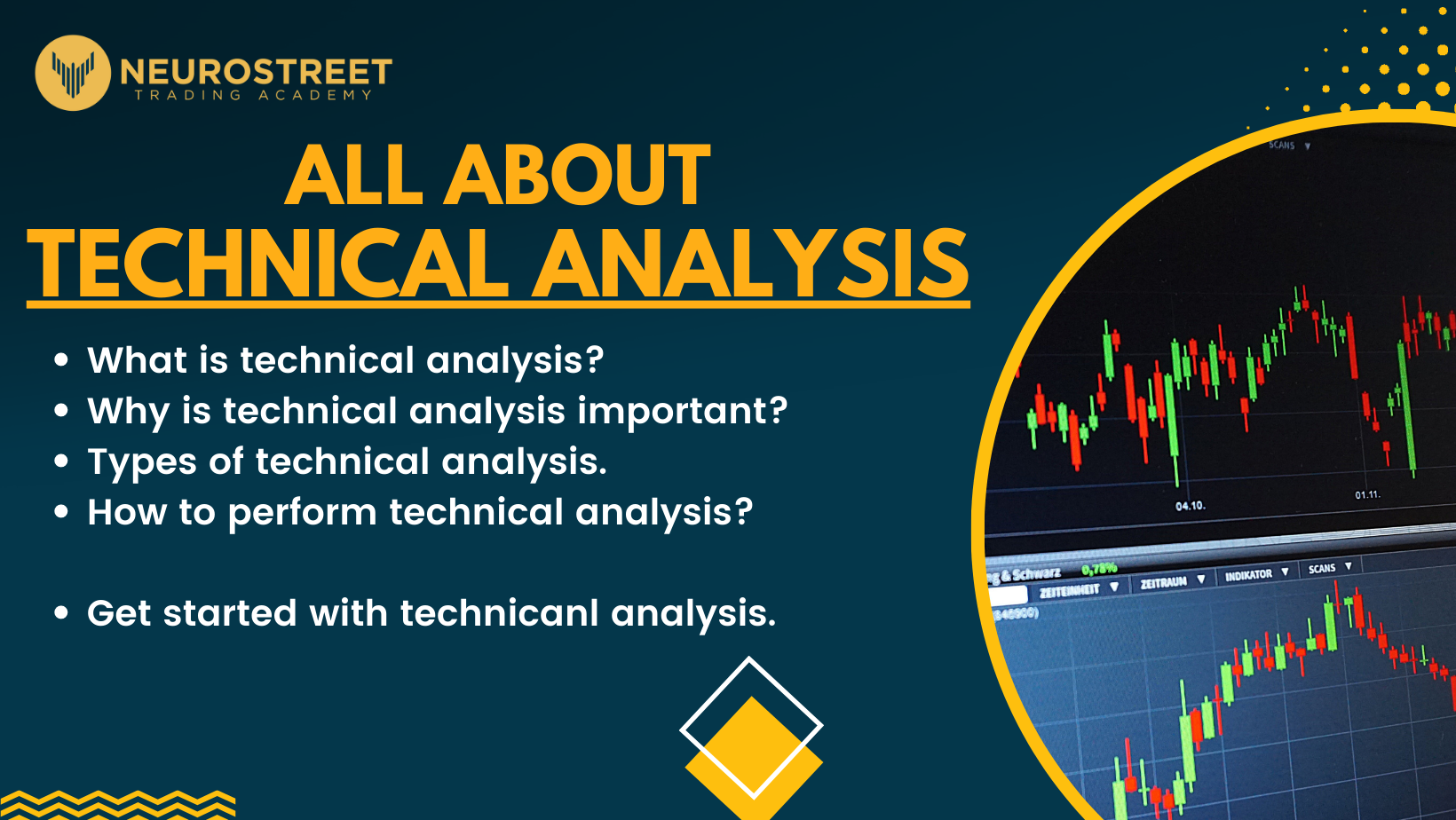A Guide To Understand Better The Technical Analysis
Technical analysis is a trading discipline that is used to evaluate investments and identify trading opportunities by analyzing statistical trends that occur in the market over time. It is a popular approach to trading in which traders use charts, indicators, market patterns, and other tools to make investment and trading decisions based on past price movements.
As we’ve heard the famous saying: “History repeats itself”, this also applies to technical analysis. Patterns that have worked in the past have a high chance to work in the future.
In this blog post, we will discuss what technical analysis is, why it is important, and how to use it in order to gain an edge in the financial markets.
What Is Technical Analysis?
Technical analysis is a method of evaluating securities by analyzing statistics generated by market activity, such as past prices and volume. Traders who use technical analysis believe that market trends, both uptrends, and downtrends, can be identified and predicted through the analysis of historical market data.
Technical analysts use charts and other tools to identify patterns and trends in the market, such as support and resistance, supply and demand, market formations like double tops, head and shoulders, and many more. They then use this information to make an educated guess of where the price could go next.
Have you ever asked yourself: “Why does technical analysis work?”. The psychology behind technical analysis is that the market is a collective of millions of individuals, all seeing the same patterns. Over time, traders have spotted numerous patterns, built different strategies, and acted the same way when they see a specific pattern. So, when 1 million traders see a double top, they are all likely to predict the market is going to reverse down.
The downside is that market patterns like this can be manipulated by banks and big financial institutions. If trading was as easy as spotting a double top, everyone would be a rich trader. It takes a lot more than just technical analysis.
Why Is Technical Analysis Important?
Technical analysis is important because it helps traders identify patterns and trends in the market that may not be visible to the naked eye. By analyzing past market data, traders can gain insight into how the market may behave in the future.
One of the biggest advantages of technical analysis is that it can be used to identify key support and resistance levels. These levels represent prices at which a security is likely to experience significant buying or selling pressure. Traders can use this information to determine when to buy or sell a security, and at what price.
Furthermore, by analyzing price action, traders can see the footprints of big banks and financial institutions. If there is a momentous move happening away from a factionary level of 1.15000, then if the price pulls back to that same level – it is most likely the market will react, find demand and provide another push from that zone.
Another advantage of technical analysis is that it can be used to identify trends in the market. Market structure is the foundation of trends. Every trader must learn to read market structure and identify structural levels like Higher Highs, Higher Lows, etc.
And now you might ask: “OK, how do I perform technical analysis?”. Let’s have a look!
How To Use Technical Analysis
Technical analysis is a very broad concept. There are multiple ways to go around it. A trader can just observe raw price action, while other traders can use a combination of price action and indicators to find a happy medium. Every trader has to find out what works best for him and build a strict strategy around it.
To use technical analysis effectively, traders must first understand the basics of chart analysis first. Charts are graphical representations of market data that show price and volume information over time.
One of the most common types of charts used in technical analysis is the candlestick chart. Candlestick charts show the open, high, low, and close prices for a security over a given period of time. By looking at the patterns of these candles, traders have ample opportunities and ways to determine market trends, entry signals, and more.
At NeuroStreet, we suggest that traders first learn how to read candlestick charts and build their price action understanding. That is the foundation of any trading strategy. After this is mastered, we have designed special indicators, that can automate your trading processes.
There are a number of technical indicators that traders use to analyze the market. These indicators are mathematical calculations that are based on the price and/or volume of a security. Some of the most common technical indicators include moving averages, relative strength index (RSI), and stochastic oscillators.
As with price action, there are many ways to go about indicators. Even if we only take moving averages – they can have different periods (8,21,200) or different types of moving averages (exponential, linear, etc.) and you can be using a combination of multiple moving averages. It is a complex journey to build a strategy based on indicators.
Hence why, at NeuroStreet, we’ve done all the work for you! NeuroStreet is powered by Architects of Algos and Indicators (ARC-AI), who specialize in creating cutting-edge indicators and provide a full strategy alongside. So, if you are looking for indicators – look no further!
Conclusion
Technical analysis is an important tool for traders who want to make educated investment decisions. By analyzing past market data, traders can gain insight into how the market may behave in the future because history repeats itself.
Right now, you should be concluding which technical analysis tools to use. We suggest you start with raw price action, market structure, support and resistance, and supply and demand. Master those and then you can look into adding some indicators that can help you shape the best trading opportunities.
The best place to learn is on the NeuroStreet Trading Academy’s YouTube Channel! Here is a link for it.
In upcoming blogs, we will talk about all those technical analysis tools and focus on their implementation.
Let us know if you have any suggestions or questions. We will be happy to address those. Happy trading!



